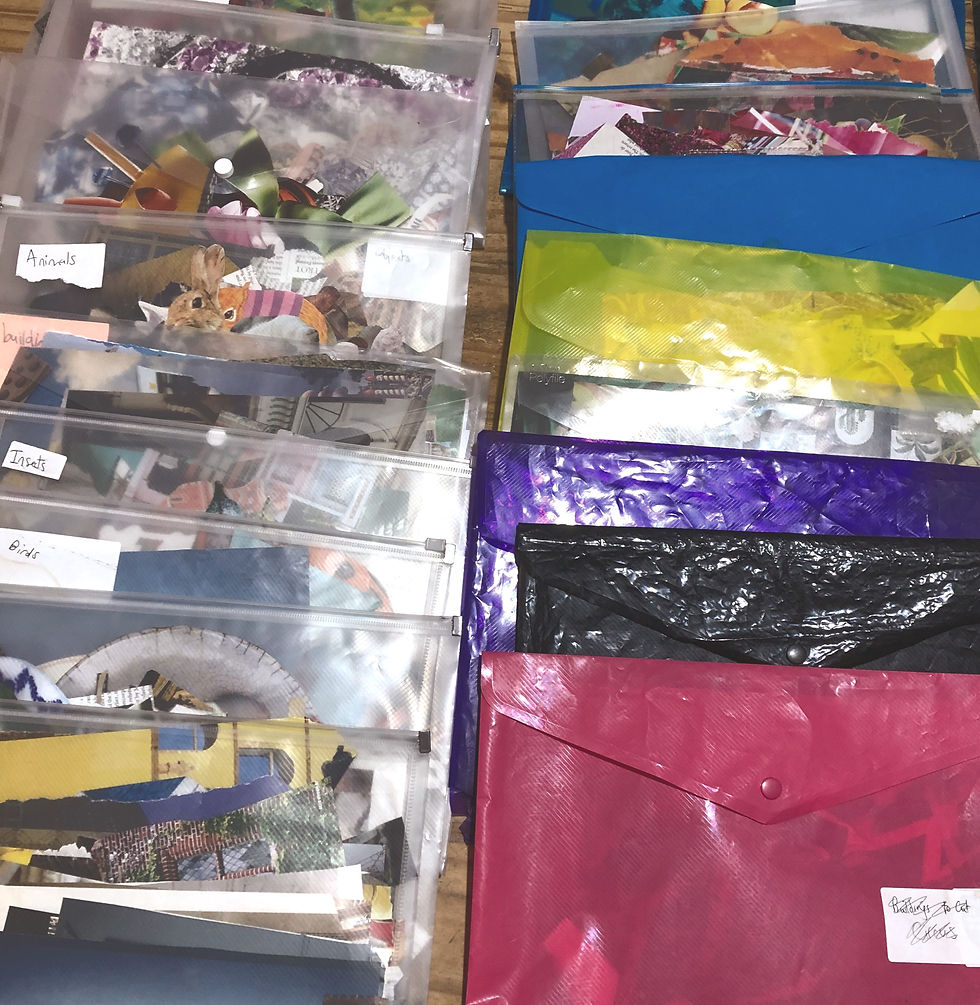A Decoupage Journey
- Michaela McMillan
- Nov 16, 2020
- 3 min read
Somewhere I've Been In A Dream

Okay, so it's right in the middle of the hectic Christmas period and usually I'd be busy packing and unpacking for shows and galleries, but obviously this year is a bit different. Instead I am in my workshop, and still making. My animals have been proving really popular, and I adore creating their personas and discovering who they are going to become, but it's also a great to have a several different types of work on the go. If I focus on just one certain type I can feel like a production line, and when I feel like that, my work seems to falter and not be as exciting.

So I've been working on a wall dish, called Somewhere I've Been In A Dream. Sometimes its lovely to just work on a pure decoupage project - it helps me refocus when I then go back to pieces with lots of embellishments. The base is a wooden hand carved dish, with the delightful idiosyncrasies that you find in handmade objects. The concept is a mix of my travels, things I've read and seen, and fairytales of kingdoms and faraway places, where anything can happen.
Way back at University, I remember working on a project involving paper mâché in my first year - I have a feeling it was part of a surface pattern project. I absolutely adored it. I loved how the paper became almost fabric like as it absorbed the wall-paper paste, and it would adapt to the curves of any surface I applied it to. I used to paint the outer layer then, whereas now I use cut papers. I thought this was just another layer of the paper mâché, but I was corrected at one of my early shows by a couple of customers who informed me the correct term was decoupage - the technique of decorating a surface with cut out papers.
So now it is one of my favourite and most versatile processes. I find it really calming, and absorbing. I can apply it to almost any surface. I can get excited about the papers as they take on the form of the object I am covering, and as the pieces start to merge together the colours start to take on a new life. I always used to prefer torn edges, I really couldn't stand the precision of a cut line - this has completely turned on its head, and I'm now very unlikely to use torn pieces, and handout everything.
I have a library of cut images. The patterned and coloured pieces are catalogued in colour order through into a variety of white hues, and then the papers with images
are kept in subjects from animals, insects, flowers, fish, buildings, etc. It's a job to do in front of the tv, or in pockets of down time, I tend not to sit "doing nothing" very much!

Each piece of work will have between 6 and 8 layers of paper. I always start off with 2-3 layers of paper mâché, as this gives the sculpture a more feminine silhouette, with hard edges made softer and less angular. Then after I have sanded the paper mâché, I start to add the coloured papers. Different papers absorb the glue at different rates, but I find if I scrunch up the papers a bit, it speeds up the absorption. Each layer is left to dry and then sanded. This is the key to a smooth final surface with a depth to the finish. I tend to be quite severe with the first sanding, and get lighter with each subsequent layer. The first papers I apply are setting the colour, tone and feel of the work, and the final layers are the images I want to really stand out and show what the work is about. After that I varnish with a diluted PVA glue, then 2 layers of non-diluted glue. It's the best finish I can find without discolouration and a high gloss.

This piece will be available in my shop this weekend, for the Great Northern Craft Fair Online. Its been a good chance to launch a new set of work for the fair. I'll be doing the same the next weekend for the Digital Craft Festival Online. I also need to start searching for some new wooden bases for some new pieces of work... as soon as lockdown eases and I can get out and about!



Comments